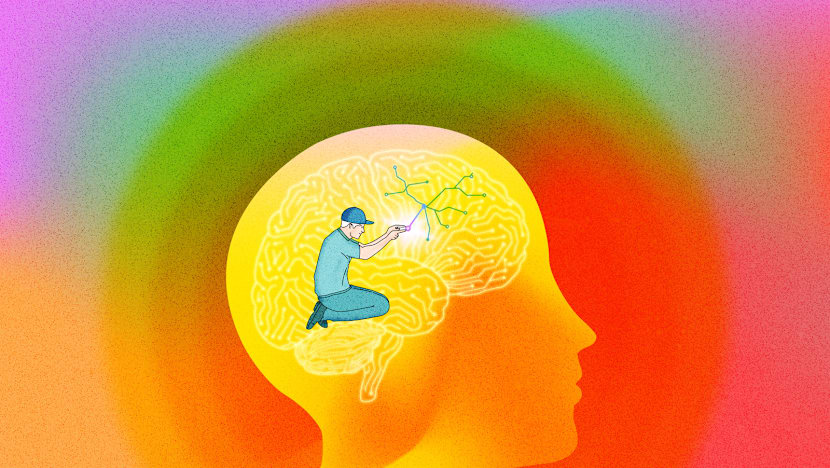Science
Can Positive Thinking Shape Our Reality? Science Explores Manifestation

The concept of manifestation, popularised through social media platforms, suggests that focusing on positive thoughts can lead to tangible outcomes in various aspects of life, from career success to personal relationships. While this idea has its critics, who label it as pseudoscience, experts in neuroscience and psychology are exploring the underpinnings of this phenomenon. They argue that while manifestation may not be magical, there are scientific principles suggesting that constructive thought patterns can indeed influence actions and outcomes.
Understanding the Science Behind Manifestation
According to Dr. Natasha Mitter, a principal clinical psychologist at Us Therapy Singapore, the core practices associated with manifestation—such as visualisation and affirmations—are closely aligned with established psychological strategies. She noted, “The brain is not static; it is shaped by repeated thoughts, behaviours and emotional experiences.” This means that techniques associated with manifestation can stimulate motivation and reshape the brain’s neural pathways through a process known as neuroplasticity.
In his 2024 book, *Mind Magic: The Neuroscience of Manifestation and How It Changes Everything*, the late Dr. James Doty, a clinical professor of neurosurgery at Stanford University, highlighted how intentional focus can reshape the brain’s neural pathways. He posited that it is possible to enhance the brain’s grey matter—tissue responsible for learning and cognitive growth—unlocking greater potential.
When individuals engage in mental exercises like visualising success or repeating affirmations, they activate the brain’s reward and motivation circuits. Dr. Jean Liu, an associate professor at the Singapore Institute of Technology, emphasised that “thoughts influence behaviour, which directly affects outcomes.” This principle is a fundamental aspect of cognitive behaviour therapy, where challenging negative beliefs can empower individuals to pursue their goals more effectively.
The Role of Positive Affirmations and Visualisation
Research in brain imaging has shown that positive thinking activates specific brain regions linked to motivation and reward, particularly the ventral striatum and prefrontal cortex. Professor Annabel Chen from Nanyang Technological University explained that the ventromedial prefrontal cortex is particularly active during self-affirmation tasks, which helps connect new goals with personal values. “When you visualise your goals, your brain starts treating them as more important,” she said, increasing the likelihood of taking action.
Dr. Mitter further clarified that the process of visualisation employs the same neural pathways as real experiences. This principle is frequently utilised by athletes, who mentally rehearse their performances to engage the brain’s motor regions as if they were physically executing the movements. Dr. Liu added that visualisation allows individuals to vividly imagine their desired scenarios, activating the same brain regions as actual sight, thereby conditioning the mind to align with a desired reality.
Over time, the repetition of positive affirmations and visualisations strengthens neural connections, making adaptive thought patterns more automatic. Dr. Mitter cautioned that this applies to both positive and negative thought patterns, creating a feedback loop where the brain learns from what it is exposed to.
The benefits of practising positive affirmations extend beyond motivation. Dr. Liu noted that they can help manage stress levels, making it easier for individuals to remain focused in challenging situations. “Individuals who use affirmations show lower cortisol levels and better stress regulation,” she stated, highlighting how this approach can improve well-being and academic performance.
Implementing Manifestation Techniques Effectively
Experts recommend several evidence-based techniques to harness the benefits of manifestation without veering into pseudoscience. A crucial first step is to define clear, achievable goals, which can activate the brain’s motivation circuits. Professor Chen explained that realistic and important goals prompt the brain to release the right mix of motivation signals, enhancing focus and persistence.
On the contrary, setting unattainable goals can lead to a lack of motivation. “That’s why it’s important to set realistic, step-by-step goals,” she advised. Additionally, using empowering language is vital; affirmations should focus on personal agency rather than relying on external forces. Dr. Mitter suggested phrases like “I will take steps toward my goal,” which activate brain regions associated with motivation and self-efficacy.
Compounding the effectiveness of affirmations, articulating them verbally engages the brain’s linguistic processing centres, while their content stimulates areas linked to emotional regulation and memory. When combined with imagery, this creates a potent mental imprint that reinforces belief and motivation.
Ultimately, experts emphasise that manifestation requires action alongside positive thinking. “Manifestation has a real scientific basis but it’s rooted in motivation, neuroplasticity, and behaviour, not magic,” Professor Chen stated. Lasting change necessitates time—often weeks or months—of consistent effort in conjunction with positive thought patterns.
As the brain adapts through sustained practice, these changes can become part of its “automatic wiring,” influencing thoughts and behaviours without conscious effort. Dr. Mitter concluded that at its core, manifestation is less about mystical shortcuts and more about utilising neuroplasticity effectively. “By repeatedly directing our attention and emotions toward a goal, we strengthen the brain pathways that make it easier to act in accordance with that goal,” she said.
-

 Lifestyle4 months ago
Lifestyle4 months agoHumanism Camp Engages 250 Youths in Summer Fest 2025
-

 Business4 months ago
Business4 months agoKenvue Dismisses CEO Thibaut Mongon as Strategic Review Advances
-

 Sports4 months ago
Sports4 months agoDe Minaur Triumphs at Washington Open After Thrilling Comeback
-

 Top Stories4 months ago
Top Stories4 months agoColombian Senator Miguel Uribe Shows Signs of Recovery After Attack
-

 Sports4 months ago
Sports4 months agoTupou and Daugunu Join First Nations Squad for Lions Clash
-

 Health4 months ago
Health4 months agoNew Study Challenges Assumptions About Aging and Inflammation
-

 World4 months ago
World4 months agoASEAN Gears Up for Historic Joint Meeting of Foreign and Economic Ministers
-

 Business4 months ago
Business4 months agoOil Prices Surge Following New EU Sanctions on Russia
-

 Entertainment4 months ago
Entertainment4 months agoDetaşe-Sabah Violin Ensemble Captivates at Gabala Music Festival
-

 Entertainment4 months ago
Entertainment4 months agoBaku Metro Extends Hours for Justin Timberlake Concert
-

 Business4 months ago
Business4 months agoU.S. House Approves Stablecoin Bill, Sends to Trump for Signature
-

 Top Stories4 months ago
Top Stories4 months agoRethinking Singapore’s F&B Regulations Amid Business Closures









